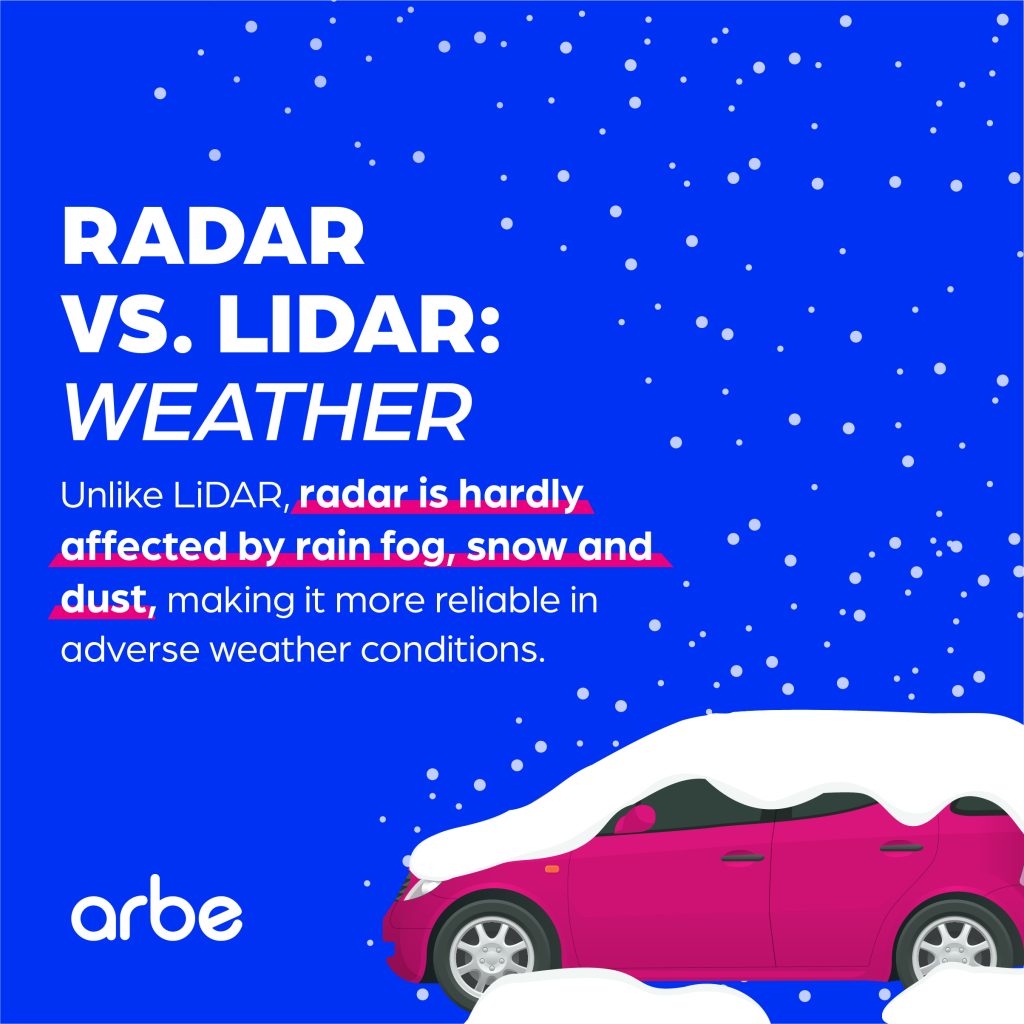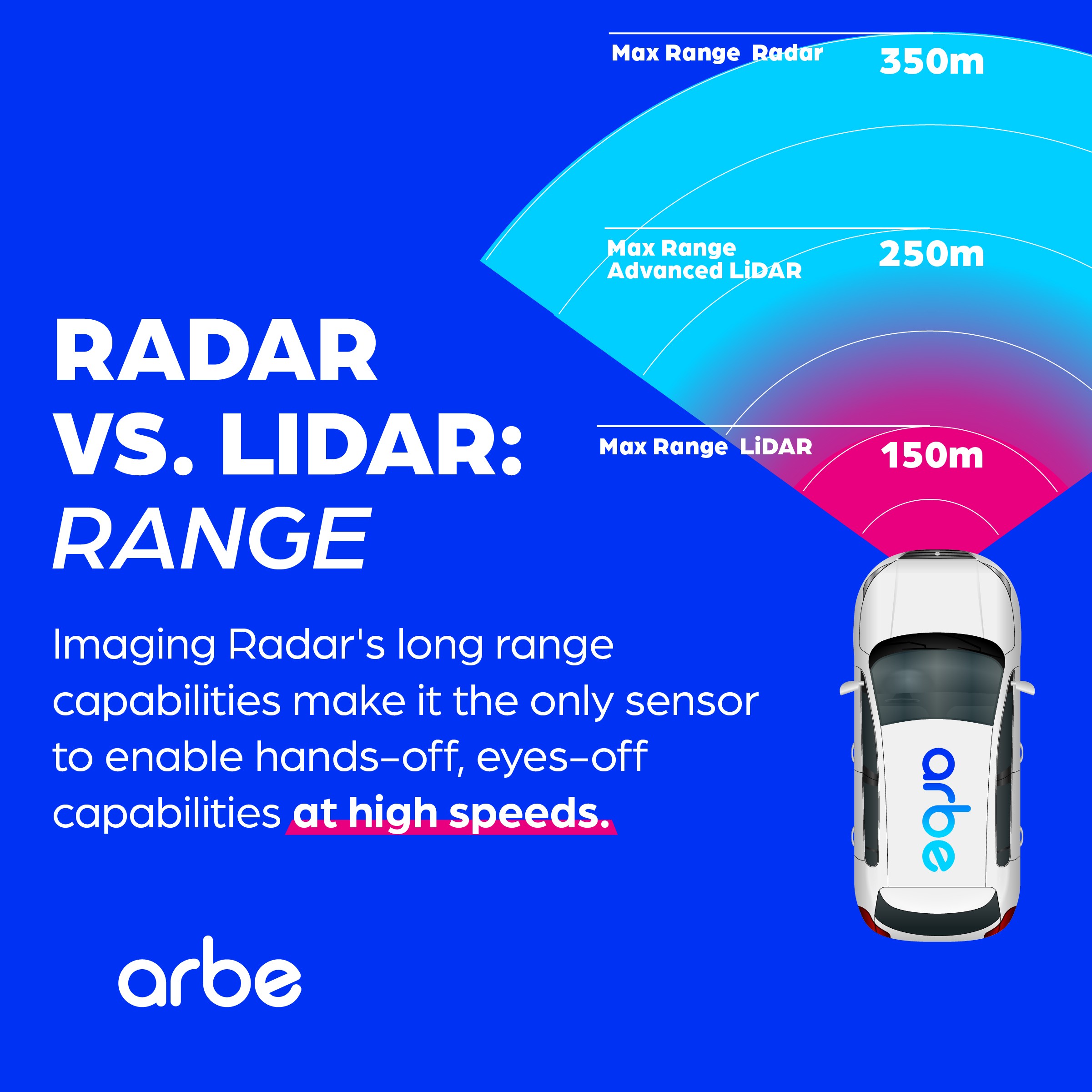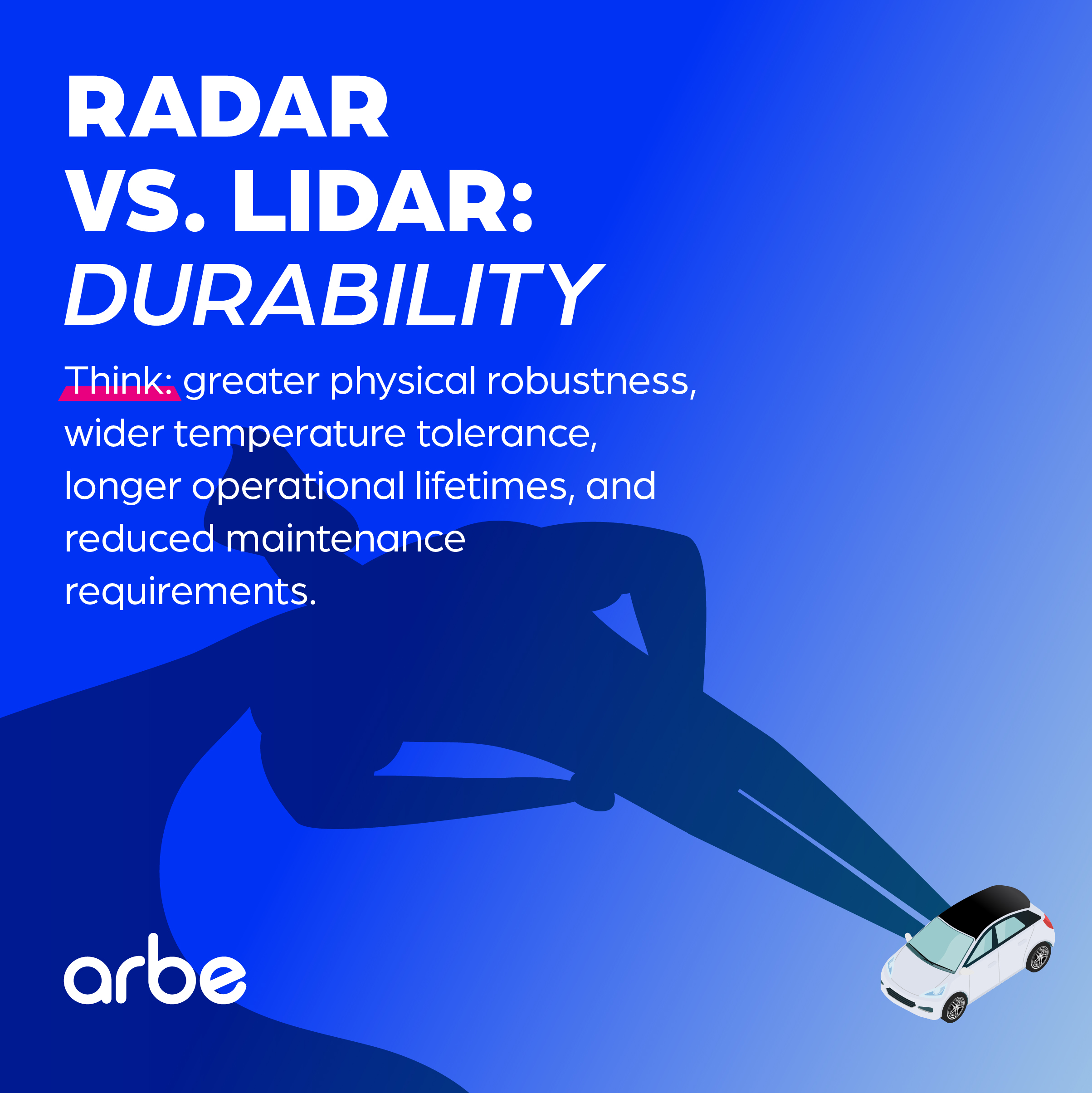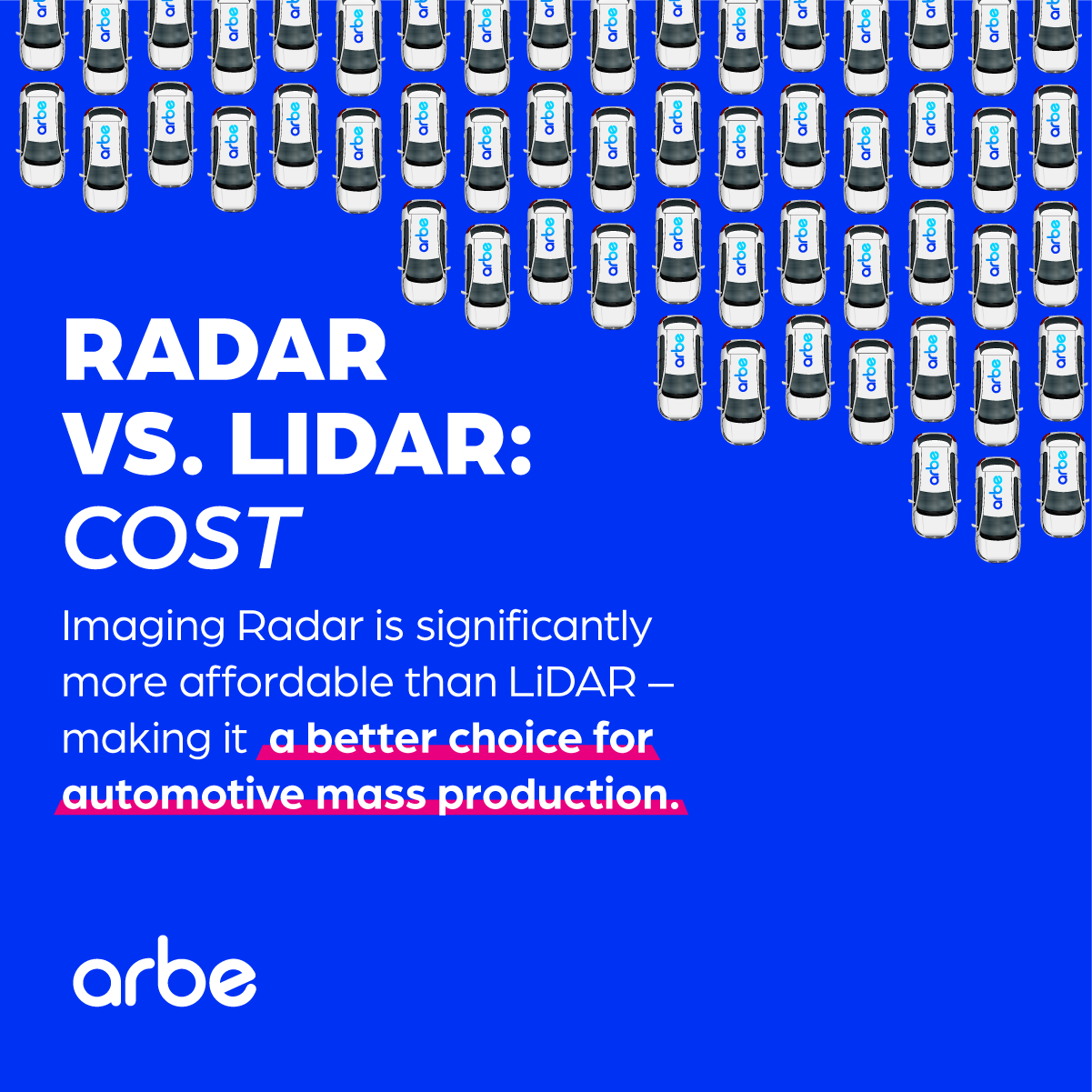Picture yourself driving on a winter evening. It’s dark and snowing heavily, severely limiting your visibility. Just like you, your car’s optical sensors – cameras and LiDAR sensors meant to support your safety – are also compromised, their effectiveness dramatically reduced by the weather conditions. If a vehicle suddenly brakes ahead or a pedestrian unexpectedly crosses the road, these sensors may fail to provide the critical advance warning needed to prevent an accident.
LiDAR has long been considered the gold standard for autonomous vehicle perception. However, its limitations in adverse weather conditions and high cost have prompted a search for a robust yet affordable alternative. Arbe is pioneering a new era of automotive sensing with our Perception Radar technology, addressing the shortcomings of both traditional radar and LiDAR while providing a crucial complementary sensing modality that works when other advanced systems cannot.

LiDAR emerged as a pivotal sensor technology in vehicle perception, stemming from Google’s L4 autonomous driving advancements. Its unique capabilities have attracted considerable attention in the automotive industry. By harnessing light waves, LiDAR generates exceptionally detailed 3D maps of the vehicle’s surroundings, showcasing remarkable proficiency across diverse application scenarios.
LiDAR’s outstanding spatial resolution enables precise object classification, which is crucial in complex environments. In urban autonomous driving settings, it excels at differentiating between pedestrians, bicycles, and other vehicles with remarkable accuracy. The sensor can detect even extremely minute obstacles, presenting intricate details that support navigation in controlled environments, such as precisely mapped areas or test sites.
The technology’s expansive field of view is immensely valuable in scenarios requiring comprehensive environmental awareness. For example, for autonomous taxis navigating urban landscapes, a wide field of view facilitates optimal route planning, enables effective collision avoidance, and enhances interaction with surrounding traffic and infrastructure.
However, LiDAR is not without significant challenges. Its performance suffers dramatically in harsh weather conditions like rain, fog, snow, smoke and dust. Light waves become scattered and absorbed by water droplets or snowflakes, greatly impairing LiDAR’s ability to map the surrounding environment accurately. This weather sensitivity compromises its reliability in regions with unpredictable or extreme seasonal conditions.
The long-term durability and stability of LiDAR’s performance merit further investigation. When subjected to challenging driving conditions – such as poor road surfaces or extreme temperatures – the reliability of LiDAR systems can become unpredictable. It is also limited to mid-range distances, which restricts its effectiveness in high-speed situations and long-distance hazard detection – a significant drawback. Plus, unlike radar, LiDAR lacks Doppler capability, making it less proficient at determining the speed of approaching objects – a critical limitation in situations where rapid speed assessment is essential for safe driving.

While Chinese LiDAR companies have progressively overcome manufacturing and large-scale production challenges, the technology still faces several constraints. These include:

In recent years, 4D millimeter-wave radar has emerged as a formidable alternative to LiDAR, with Arbe’s technology leading the way. Arbe’s cutting-edge Perception Radar breaks traditional radar limitations, offering ultra-high resolution that enables precise target differentiation. Even in dense urban traffic, inclement weather, or poor lighting conditions, the radar can seamlessly classify and identify pedestrians, vehicles, and other objects, consistently delivering reliable detection and tracking capabilities.
Unlike LiDAR’s visual-based operation, Arbe’s Perception Radar functions as an independent data source. When paired with onboard cameras, it enables a more comprehensive perception framework. Advanced high-resolution systems provide long-range, high-accuracy object detection, empowering drivers or autonomous systems to anticipate and respond to potential hazards more effectively. They supply real-time data about object distance, speed, and travel direction – critical information for safe navigation and decision-making during high-speed maneuvers.
Moreover, Arbe’s technology boasts real-time free-space mapping, allowing it to pinpoint clear pathways and open areas surrounding vehicles. This provides a comprehensive understanding of the environment for Advanced Driver Assistance Systems (ADAS) and autonomous vehicles. The radar even excels in detecting low-reflectivity objects, like pedestrians at night or road debris, effectively addressing the shortcomings of other sensors and significantly bolstering driving safety.
Compared to LiDAR, Arbe’s radar is also significantly more cost-effective and scalable, essential criteria for broad adoption across various automotive applications. The system offers discreet integration behind the vehicle’s bumper, eliminating the need for structural alterations and maintaining the vehicle’s aesthetic design. As such, automakers can more easily incorporate advanced sensing technology into mass-market vehicles without substantially increasing costs.

In intricate urban settings and applications demanding high precision, LiDAR’s resolution and mapping capabilities are undoubtedly impressive. But while LiDAR offers robust resolution and mapping capabilities in ideal conditions, a comprehensive sensor suite that is dependable in every scenario is essential for L2+ through true autonomous driving. When it comes to high-speed driving and all-weather operational scenarios, high-resolution radar is rapidly becoming the market’s preferred choice, given its cost-efficiency and robustness. In this field, Arbe’s 4D radar technology transcends the constraints of traditional radar, providing automakers with a highly efficient alternative to LiDAR. This advancement promises to introduce safer and more cost-effective solutions to the intelligent automotive sector, helping to accelerate the widespread adoption of intelligent driving technology.
Connect to learn more© Arbe , All rights reserved